 The webinar series called “Commonsense (sic) on Syria” organised by Just World Educational, a “non-profit” educational organisation affiliated to a book publishing enterprise run by Helena Cobban is for the most part, an exercise in cheap propaganda. The latest session was a textbook example of how to produce propaganda for a regime, meant to be consumed by educated and informed people in the west.
The webinar series called “Commonsense (sic) on Syria” organised by Just World Educational, a “non-profit” educational organisation affiliated to a book publishing enterprise run by Helena Cobban is for the most part, an exercise in cheap propaganda. The latest session was a textbook example of how to produce propaganda for a regime, meant to be consumed by educated and informed people in the west.
This is the recipe: present only one guest that represents your narrative; allow the moderator to frame the discourse to fit that bias and never question the narrative; go so off theme of the actual topic that the talk is supposed to cover (in this case “On Western Media and Syria”); “blind the audience” with an overwhelming assortment of random notions dressed up as facts; use the topic of terrorism as the key theme of the war and play down the humanitarian situation; name drop and accuse without presenting evidence or a right of reply to the accused; filter any discourse and dissent by allowing a question time that is limited to the moderator and guest responding only to questions posed by their friends and admirers; and to top it off, give the audience the idea that what they are hearing is correct, not by presenting any kind of scholarly analysis or evidence, but by framing what is being heard as being “common sense”, a belief so correct, sound and widely held as to be an anathema to doubt it for a moment.
Even the style of the moderator is instrumental in the recipe, as she liberally throws in “air quotes” to emphasise that any view aside from her own or any alternative narrative only deserves to be ridiculed, for this tic of derision is designed to function as a mechanism that seeks to convince the viewer that is it worthless to present any counter-position, and thus excuse her lack of having provided any. In doing so, the moderator pushes to dismiss that a dialectic approach could be worthwhile as a means of the discovery of what is true.
Truth here is not the point. An excess of random information is rattled out in what looks more like a hack job and hatchet job and screed against any and every news source but that of the guest and moderator, particularly the opening screed against the NYT and the internal one against Amnesty International, MSF and HRW, which are not Western Media, but are human rights organisations. But if one actually listens and attempts to sort through the whiny list of grievances, one finds a thoroughly weak grasp of reality. Max Blumenthal pulls the “stop the sanctions” rabbit out of his hat, saying that it does not weaken the “legitimate leader of Syria, who has won the war” (in what a normal human being might see at best as nothing more than a Phyrric victory) but at the same time claims that it is desirable to do so. He claims that sanctions against Iran have caused “hundreds of thousands of deaths from Coronavirus”. Fact checking isn’t even necessary with an absurd number like that, but it if it’s true, you realise that Blumenthal has sources the rest of the world doesn’t have any access to.
Helena Cobban’s screed continues against the think tanks, including the Brookings Institution (for which her husband must have earned quite a pretty penny as a senior fellow). It should be clear to anyone (shall we say it is “common sense”?) that political ideas are associated with money, that people make good money by promoting their formulas in western think tanks and that foreign policy, and to some extent journalism, are influenced by the policies that the think tanks promote. It is yet another thing to associate these western governmental policies as proof of the narrative that the opposition to the Syrian regime stopped being genuine and was merely an instrument to push forward the USA/Israeli policy of regime change. To do so is a denial first of all of the agency of the Syrian people, and secondly, it is a dangerous disconnect from the tangled realities of the war. There is even denial of the presence of western journalists in Syria, no mention whatsoever of the hundreds of citizen journalists who have documented on a daily basis what life in wartime is actually like. There is a black hole where the awareness of this source of verifiable information and archive of documentation of all kinds is beyond the access and comprehension of Blumenthal and Cobban, becoming quite absurd to the casual observer, and a great deal more to the journalists and eyewitnesses who have collected evidence of war crimes and crimes against humanity within Syria for nine years.
 To conflate, again and again, the White Helmets with a propaganda operation run by a western PR company is to miss the point of the (this time literally) hundreds of thousands of deaths by the air strikes, barrel bombs and missile attacks of the regime against areas where the regime itself has forced millions into internal displacement. Even RT, which Blumenthal mentions, has flown drones over Aleppo, showing the utter devastation of the city that had been “won” by the Russia-backed Syrian government. To claim to have “exposed” the White Helmets and to state that he, the journalist has been “attacked”, is to have a dubious connection to the meaning that flows behind words. A journalist should be criticised if the work produced is shoddy, since he or she is expected to present evidence and then to check that evidence and to even challenge it through due diligence, but in this case, even logic would suffice. Asserting that Syria was being destroyed by not allowing it to promote tourism is such an absurd claim when the reality of the destruction of Syrian homes, infrastructure and any semblance of civil functioning in all the parts the regime has (literally) attacked is before the eyes of everyone. To deny this visibile evidence denotes a detachment from reality that is frightening, but more so in the arrogance and determination with which it is presented.
To conflate, again and again, the White Helmets with a propaganda operation run by a western PR company is to miss the point of the (this time literally) hundreds of thousands of deaths by the air strikes, barrel bombs and missile attacks of the regime against areas where the regime itself has forced millions into internal displacement. Even RT, which Blumenthal mentions, has flown drones over Aleppo, showing the utter devastation of the city that had been “won” by the Russia-backed Syrian government. To claim to have “exposed” the White Helmets and to state that he, the journalist has been “attacked”, is to have a dubious connection to the meaning that flows behind words. A journalist should be criticised if the work produced is shoddy, since he or she is expected to present evidence and then to check that evidence and to even challenge it through due diligence, but in this case, even logic would suffice. Asserting that Syria was being destroyed by not allowing it to promote tourism is such an absurd claim when the reality of the destruction of Syrian homes, infrastructure and any semblance of civil functioning in all the parts the regime has (literally) attacked is before the eyes of everyone. To deny this visibile evidence denotes a detachment from reality that is frightening, but more so in the arrogance and determination with which it is presented.
It is a slap in the face to the oppressed to witness the vehemence with which Blumenthal asserts his position that everything would have been just fine if the protesters stopped in the early days, that the “legitimate government” was merely responding to the violence of the protesters and that they simply had to call Russia, Iran and Hezbollah in because these protesters were armed by the United States, with the assumption that the listener will not actually check that this arming was next to nothing and included orders to not fight against the Syrian regime in any way.
Blumenthal and Cobban constantly trip up on the trope of the proxy war as cause of the uprising in their continual denial of the maxim that correlation is not causation. They fall into the questionable cause logical fallacy in nearly every statement they make, and do not allow space for it to be challenged, because they already accept it as a truth. They put the US involvement before the involvement of any other players, including that of the Syrian intelligence/torture machine and decades of oppression and the absence of free speech within Syria due to the dynasty that refused to do anything but consolidate its power and destroy all opposition. The history of the war is rewritten with some “scare quotes” and lazy journalism.
However, the evidence they sought to produce in this webinar, that Western journalism was not presenting an accurate or a complete picture of the war was never touched upon. Because that was not really the point of the webinar. It was simply yet another exercise in propaganda for the Syrian regime, because evidently, despite their claims to the contrary, it is impossible for the Assad Regime (a name they throw in air quotes, but don’t define what it is instead of being a regime, aside from stating that it is legitimate) to celebrate a victory, when half of the country is in ruins and half of the citizens, only those that opposed the regime in power, are displaced, many of them permanently.


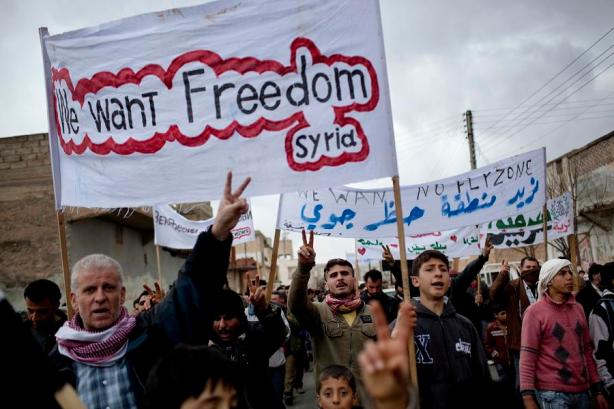
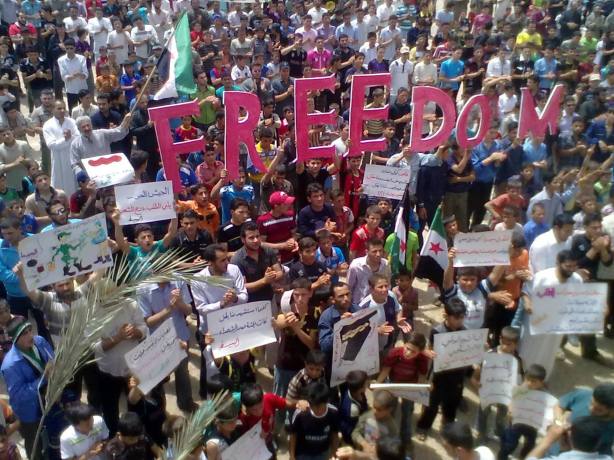

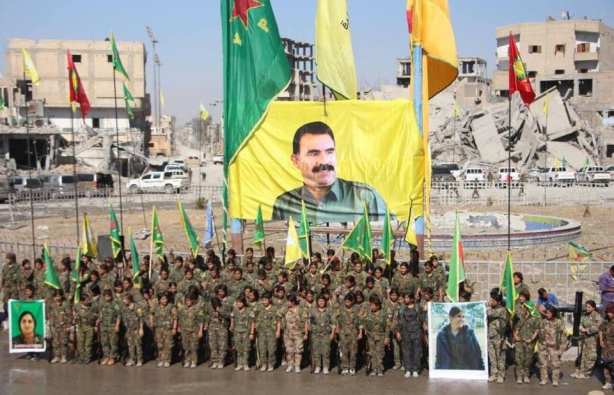
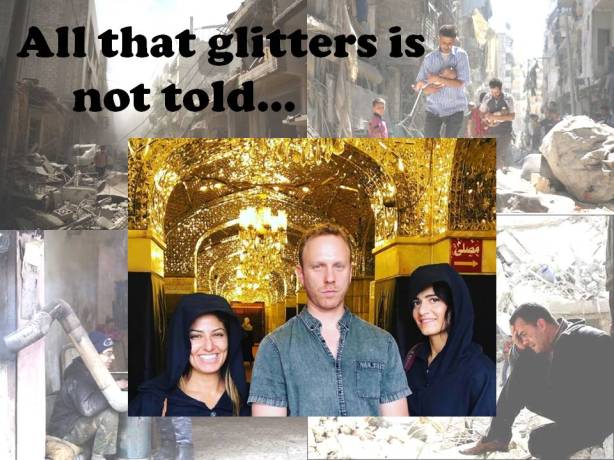

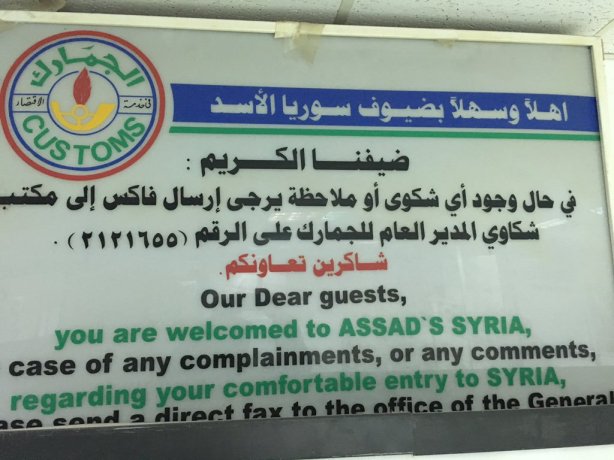
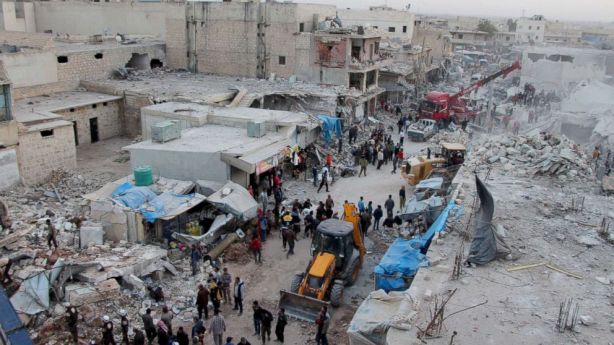
 At the end of February, the Lebanese newspaper Al Akhbar, notoriously close to Hezbollah, reported that one of the most important names of the leadership of the repressive Syrian security apparatuses, Ali Mamlouk, who appears in the European blacklist for those responsible for crimes against humanity, is said to have arrived in Rome to discuss coordination under the name of “fighting terrorism”, expanding a relationship that already exists between the intelligence departments of the two countries. According to Al Akhbar and reported by the prestigious think tank Carnegie Middle East Center, Mamlouk is said to have met at the Viminale, home of the Italian Ministry of the Interior, the heads of the ministry itself and of the Agency for Information and External Security. The meeting is said to have been facilitated by the Lebanese Director of General Security Abbas Ibrahim, who has always been very close to Hezbollah and who seems to have also convinced Rome to send a private plane to pick up the powerful Syrian intelligence chief from Damascus.
At the end of February, the Lebanese newspaper Al Akhbar, notoriously close to Hezbollah, reported that one of the most important names of the leadership of the repressive Syrian security apparatuses, Ali Mamlouk, who appears in the European blacklist for those responsible for crimes against humanity, is said to have arrived in Rome to discuss coordination under the name of “fighting terrorism”, expanding a relationship that already exists between the intelligence departments of the two countries. According to Al Akhbar and reported by the prestigious think tank Carnegie Middle East Center, Mamlouk is said to have met at the Viminale, home of the Italian Ministry of the Interior, the heads of the ministry itself and of the Agency for Information and External Security. The meeting is said to have been facilitated by the Lebanese Director of General Security Abbas Ibrahim, who has always been very close to Hezbollah and who seems to have also convinced Rome to send a private plane to pick up the powerful Syrian intelligence chief from Damascus. Interview with Mahmoud al-Basha by Francesco Petronella, previously published in the print version of
Interview with Mahmoud al-Basha by Francesco Petronella, previously published in the print version of 

 “Even Govt don’t deny torture happened”: Spy vs Spy…. A Syrian comedy starring Vanessa Beeley. Guest starring Tim Anderson, Eva Bartlett, Scott Gaulke and Iman & Susan Safi
“Even Govt don’t deny torture happened”: Spy vs Spy…. A Syrian comedy starring Vanessa Beeley. Guest starring Tim Anderson, Eva Bartlett, Scott Gaulke and Iman & Susan Safi

 It seems that the Old Guard does not appreciate the New Guard getting all this attention, glory, money, fame, and so on from their promotion of the regime. At the same time, they are doing damage control of the actual incidents that could be extremely damaging for the regime, such as Christian Zionists like Janice Korkamp (seen in a photo next to Beeley) making multiple visits to regime-controlled Syria and promoting the regime in her blog. It’s hell on the image to have to deal with this! You can point out very bad connections and label them all as spies, or you can “contextualise” all of these fault lines, as Vanessa hopes she can do. However, the fact is clear that the admission of Assad’s knowledge of the regime’s torture does not bode well for the snow white image of the regime, particularly after years spent denying torture having ever taken place. The only way the Old Guard seems to be able to do it is to follow the Tankie Handbook step by step.
It seems that the Old Guard does not appreciate the New Guard getting all this attention, glory, money, fame, and so on from their promotion of the regime. At the same time, they are doing damage control of the actual incidents that could be extremely damaging for the regime, such as Christian Zionists like Janice Korkamp (seen in a photo next to Beeley) making multiple visits to regime-controlled Syria and promoting the regime in her blog. It’s hell on the image to have to deal with this! You can point out very bad connections and label them all as spies, or you can “contextualise” all of these fault lines, as Vanessa hopes she can do. However, the fact is clear that the admission of Assad’s knowledge of the regime’s torture does not bode well for the snow white image of the regime, particularly after years spent denying torture having ever taken place. The only way the Old Guard seems to be able to do it is to follow the Tankie Handbook step by step.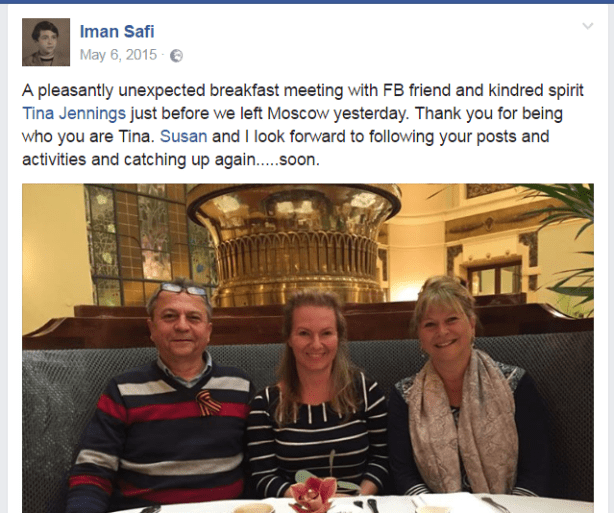






 reprinted from
reprinted from